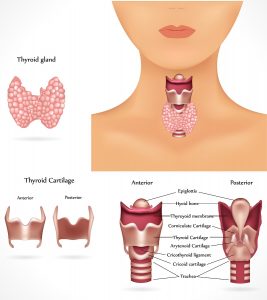Assisted Living: 7 Answers to Common Questions
What is assisted living (AL)?
A Scandinavian model for senior care, now known as assisted living, made its way into America’s care system in the 1980’s. According to a 2012 report by AARP, there is no standard definition for assisted living (AL). Although individual states and residential facilities can give their own definition of AL, the term most often means that help is provided with meals, social support, medications, dressing and/or bathing and the like with 24-hour per day supervision. The Assisted Living Federation of America (ALFA) (2013) defines assisted living as “a long-term care option that combines housing, support services and health care, as needed”. The focus of AL is on maintaining dignity, respect, and independence of older residents.
In 2010, there were more than 51,000 licensed residential care settings (including assisted living) that reported more than 1.2 million beds (AARP, 2012). A study published by the National Center for Assisted Living (NCAL) cited 31,100 assisted living facilities serving 733,400 persons in 2010.
What is the typical assisted living resident like?
The average age of those in assisted living facilities is 86.4 years (MetLife, 2012). According to the National Center for Assisted Living (2013), the typical resident needs help with at least one activity of daily living (ADL), and most are over the age of 85. More females (76%) live in assisted living settings than males (26%). Thirty-seven percent of persons in AL receive help with more than three ADLs (NCAL, 2012). More than half of persons in AL facilities have some type of cognitive impairment (Alzheimer’s Association, 2009). A growing percentage of persons in AL facilities have Alzheimer’s disease.
What types of services are provided?
Some of the usual services provided in a licensed AL include:
• Assistance with eating, dressing, bathing, toileting
• Access to health services
• Medication management
• Dining services
• 24 hour staffing and security
• Emergency call systems
• Exercise and wellness facilities
• Social and recreational activities
• Housekeeping and laundry
• Transportation
• Access to banking
• Chaplain or religious services
• Memory care
How do I know if I need assisted living?
There are a variety of reasons why persons might choose an assisted living setting. Some people move to AL because they want more socialization than living alone, they want to be nearer to their adult children but do not reside with them, or because they can no longer manage at home. The person in an assisted living facility generally needs some help with activities of daily living, but does not need skilled nursing care. So, AL might be right for you if you wouldn’t be able live at home any longer without help, but you still don’t need to be in a nursing home or need the help of a nurse around the clock. You may be able to do many things on your own but maybe you have difficulty with dressing, meal preparation, or managing your pills.
How do I decide which senior living community to choose?
There are a variety of senior living options, of which assisted living is but one. Often, family members will help you decide which option is best for you, but you should look at all your choices. You should pick a place that offers the services that you need. Cost and location are additional considerations. It is also good to ask about the staffing ratios, what nursing care is available, and what happens if you later need a higher level of care than the AL provides. ALFA provides a Guide to Choosing an Assisted Living Community. This includes a helpful checklist that can be downloaded from their website.
How much does it cost to live in an AL facility?
The cost of AL depends on where you live. Keep in mind that most assisted living is paid for privately, meaning out-of-pocket, and not by insurance. According to MetLife’s Market Survey of Long-term Care Costs (2012), the national average base rate for assisted living was $3,550 per month. This means that a person who lives in an assisted living facility can expect to pay an average of $42,600 per year. Of course this also varies depending on the number of extent of services with which the resident needs help. The base rate generally includes specific services, but each additional service beyond that may add an extra monthly fee. Compare this to an average nursing home rate for a shared room at nearly $84,000 per year for a person needing Alzheimer’s care (MetLife, 2012) or a national median cost of $270 per day in a nursing home that provides 24-hour per day nursing care (Genworth Cost of Care Survey, 2013).
Are there alternatives to assisted living facilities?
So, are there other options besides going to an assisted living facility if you are an older adult who needs a little help? The answer is yes. Adult day services are one community option. Also, many home care agencies offer companions, homemaker aides, or nursing assistants to help people age in place at home. Most of the time, getting these services means a minimum number of hours per day must be paid for. The national average hourly rate for home health aides was $21 in 2012. Homemaker or companions who provide “hands-off” care such as running errands, shopping, housekeeping made a median of $19-20 the same year (Genworth, 2013).
This is where unique options for assisted living services at home are needed and can save consumers money. Senior Care Central offers persons needing assisted living in the home the opportunity to have more control over their care situation at a much lower cost while getting professional, quality care. Imagine that you could set the hours that you want to have a caregiver in the home, and that caregiver could be a nursing student who has a higher level of education than most home health aides. This care option may cost you half the price charged by a home health care agency. SCC’s model promotes aging in place on your own terms and lets you link with caregivers online, browse profiles to choose caregivers you want to contact, and make your care arrangements directly with them.





